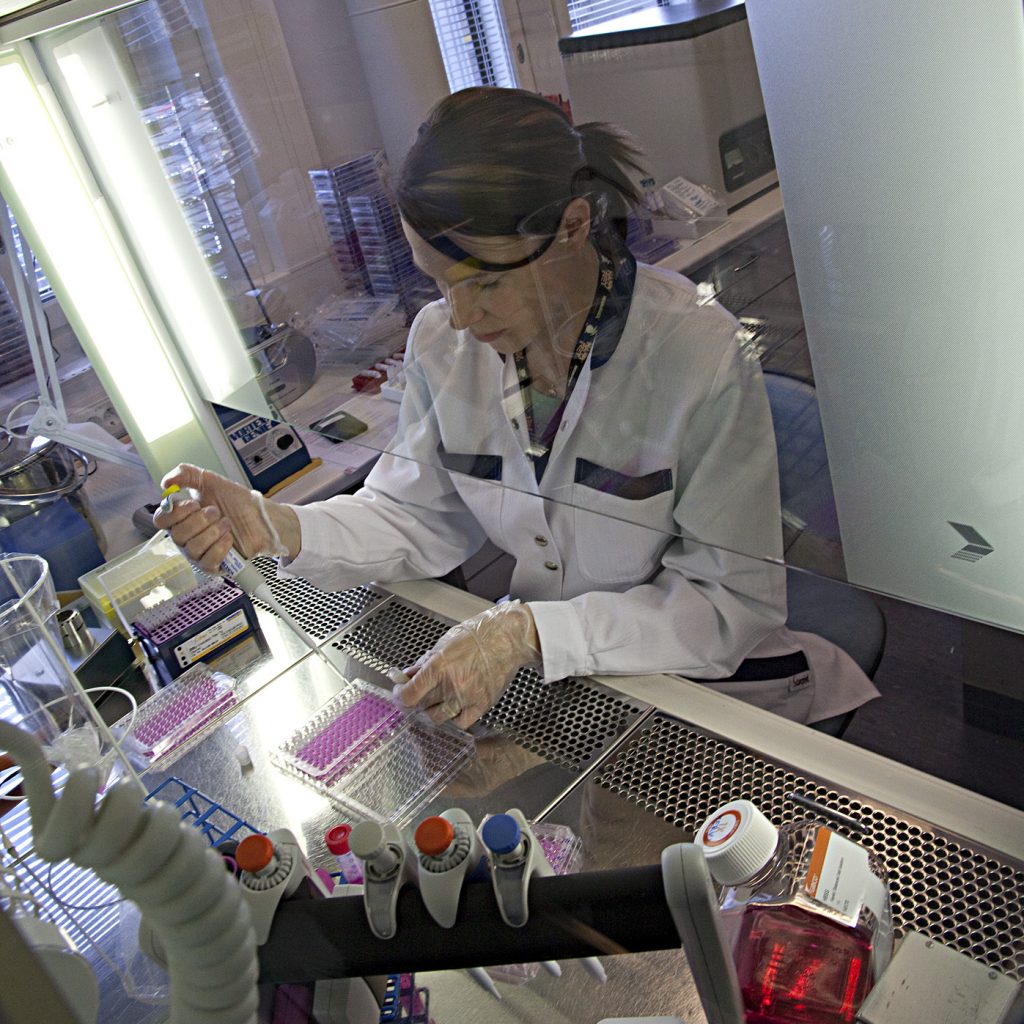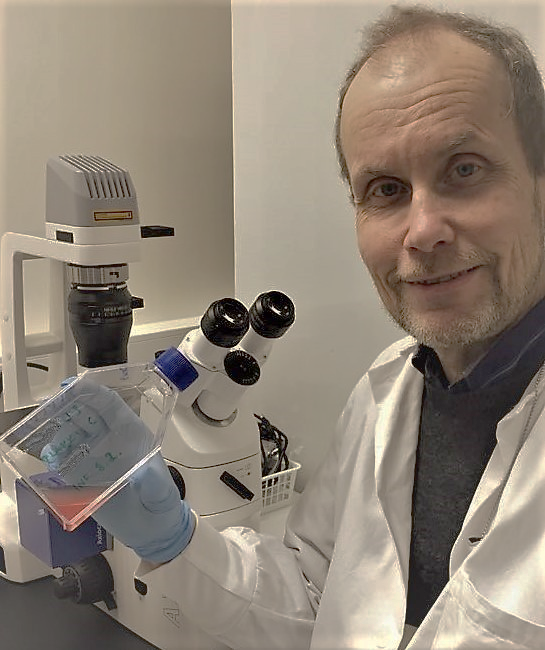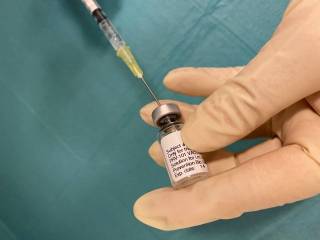The story of developing a vaccine against type 1 diabetes
Heikki Hyöty, MD, PhD, Professor of Virology, Tampere University
(updated 28.7.2025)
The development of enterovirus vaccine for the prevention of enterovirus diseases and type 1 diabetes has been the main long-term goal of my research group. This summary puts together the main steps taken so far during this mission.
Recent highlights:
The first-in-human phase 1 trial completed in Finland. See:
https://link.springer.com/article/10.1007/s00125-024-06092-w
Type 1 diabetes
Type 1 diabetes is caused by a destruction of beta cells in the pancreas. Several genes modulate the susceptibility for the disease. In addition, external (environmental) factors are important in the pathogenesis. The disease process has a clear immunological component and it often starts early, already at the age of 1-2 years. Currently, the only treatment available is based on daily insulin injections, and type 1 diabetes often leads to long-term complications which reduce the life-expectancy of the patients. Type 1 diabetes is also increasing rapidly in modern societies, and there is an urgent demand to prevent it. However, in spite of a number of human trials testing several immunological and other kinds of interventions, there are currently no preventive treatments available.
Viruses in type 1 diabetes
Certain viruses damage insulin-producing beta-cells and cause type 1 diabetes-like disease in animals. Similarly, certain virus infections have been linked also to human type 1 diabetes. During the 1960s and 1970s investigators in United Kingdom reported an increased frequency of enteroviruses in patients recently diagnosed with type 1 diabetes. Since then, several studies have confirmed this association showing enteroviruses in the pancreas of type 1 diabetic patients and documenting an increased frequency of enterovirus infections prior to the initiation of the beta-cell damaging process.
In June 2021, the Nature, one of the leading scientific journals in the world, selected the discovery of the association between enteroviruses and type 1 diabetes among the 23 major diabetes research milestones since the discovery of insulin (https://www.nature.com/collections/aecjgdhadg).
Rationale of the vaccine
Since the association between enterovirus infection and type 1 diabetes has repeatedly been observed the question about developing a vaccine against these viruses has become more and more relevant. There are more than 100 different enterovirus types, causing both mild respiratory infections and more severe diseases such as myocarditis, meningitis, pancreatitis, hand, foot and mouth disease, and life-threatening systemic infections in young infants. These viruses cause also chronic diseases like cardiomyopathies and have been linked to e.g. celiac disease. Thus, in addition to type 1 diabetes, such vaccine could also have other important health benefits. The fact that poliovirus vaccines are effective and safe suggest that it would be possible to develop vaccines against other enteroviruses too. In fact, vaccines have recently been developed against Enterovirus 71 which causes severe central nervous system diseases.
My research group has studied the role of viruses in type 1 diabetes since the 1980s. We focused on prospective follow-up studies among children to identify infections that occur before the beta-cell damaging process starts. An intensive 15-year-long research provided evidence that among the studied viruses enteroviruses are associated with the initiation of the process.
Development of the vaccine
In the 1990s we started a research that specifically aimed at the development of a vaccine against diabetes-associated enteroviruses. This work had the following three main goals:
- To identify the exact types of these diabetes-associated enteroviruses to make sure they are included in the vaccine.
- To develop prototype vaccines and test them in animal models.
- To study the mechanisms of enterovirus-induced beta-cell damage by analyzing enteroviruses from the pancreas tissue of type 1 diabetic and prediabetic individuals and by studying the mechanisms of infection in pancreatic cell models.
We first produced an inactivated whole virus prototype vaccine and tested it in mouse models showing that the vaccine is immunogenic. In 2006 the vaccine development was boosted by collaboration with industrial partners as the Finnish biotech company Vactech Oy started to develop the vaccine for human use in collaboration with Sanofi-Pasteur, one of the largest vaccine manufacturers in the world. This collaboration led to several important new discoveries.

A large-scale screening of neutralizing antibodies against more than 40 different enterovirus types in the prospective birth cohort study (the Finnish DIPP study) indicated that one specific group of enteroviruses, the group B Coxsackieviruses, was associated with the initiation of beta cell damaging process. This was a crucially important result as it indicated that it would be possible to target these viruses using a vaccine – the low number of Coxsackie B virus types (six) makes it possible to include them in a single vaccine. Since then, Coxsackie B viruses (CVBs) have been linked to type 1 diabetes in other studies carried out in different populations. It has also been found that insulin-producing beta-cells express exceptionally strongly a molecule that CVB group enteroviruses use when infecting the cell (CAR-receptor). This may explain the tropism of CVBs to insulin-producing beta cells.
Another important achievement was the production of prototype CVB vaccines. During 2006-2014 Vactech-Sanofi coalition produced preclinical CVB vaccines and tested them in mice. The vaccines included both formalin-inactivated whole virus vaccines as well as virus-like particle vaccines that were produced by recombinant protein technology. Both vaccines turned out to be highly immunogenic and did not lead to any side effects in immunized animals. These studies generated also important innovations which were patented and owned jointly by Vactech and Sanofi-Pasteur. In 2014 Vactech had an option to acquire exclusively all rights to these innovations, which gave it a full freedom to operate and take the vaccine to clinical development on its own terms.
At the same time, scientific research progressed in multiple fronts. More evidence accumulated from prospective birth cohort studies showing association between CVBs and type 1 diabetes. In addition, enteroviruses were found in the pancreatic islets of the majority of diabetic patients. In 2011-2016 we coordinated an EU consortium (PEVNET) which studied the role of enteroviruses in type 1 diabetes and analyzed samples for the presence of enteroviruses in other large international research consortia (nPOD, TEDDY, TRIGR). Altogether, these studies and research carried out by other investigators further strengthened the hypothesis that enteroviruses, particularly CVBs, can contribute to the development of type 1 diabetes.
The next critical step was the initiation of clinical development of the vaccine. The start of clinical development program became possible in April 2017 when Vactech signed a strategic partnership agreement with Provention Bio, a US company that provided capital to take the vaccine to human trials. At this point, Vactech licensed exclusively its patents to Provention Bio, and became an active partner in this new consortium. Breakthrough T1D (previously JDRF) foundation joined this effort making an investment in Provention Bio. The multivalent CVB vaccine PRV-101 was produced for human trials, and the phase 1 trial started in 2020 in Finland. The results from the interim analyses were published in November 2021 and the final results in March 2022, showing that the vaccine was well tolerated and induced a good neutralizing antibody response against CVBs. Induction of neutralizing antibodies is an important indicator of immunogenicity since neutralizing antibodies mediate protection against CVBs. The full description of the results was published in the leading European diabetes journal Diabetologia in 2024. In 2025 Vactech acquired all rights to this vaccine and is now leading its clinical development program.
Academic studies have progressed alongside the clinical vaccine development program. Vaccine was studied further by producing preclinical prototype CVB vaccines, which were tested in mice and non-human primates in a joint effort of Tampere University and Karolinska Institutet (Stockholm) during the years 2015-2018. These studies have provided important additional preclinical evidence supporting the safety and efficacy of the multivalent CVB vaccine. In 2019 the large international TEDDY study published findings that showed an association of Enterovirus B and the initiation of beta-cell damage in children followed from birth in three countries in Europe and in the US. In 2020 we started to coordinate an EU consortium (HEDIMED; www.hedimed.eu) that evaluates the role of exposome in immune-mediated diseases, including the role of enteroviruses in type 1 diabetes. In 2024 we started another EU consortium (ENT1DEP; https://ent1dep.eu/) which studies the mechanisms which could lead to beta-cell damage after enterovirus infection, and the options to prevent this event by vaccines or antiviral drugs.

Future scenarios
During the years 2021-2022 the first-in-human phase 1 study among adult volunteers generated favorable results about the safety and immunogenicity of the multivalent CVB vaccine in humans. Now the plan is to continue the development and progress to phase 1b trial which will be carried out among children, followed by phase 2/3 trials to find out the efficacy of the vaccine against acute CVB diseases and against type 1 diabetes. In addition, the vaccine could potentially be beneficial also in the prevention of celiac disease since recent studies have suggested that enteroviruses, particularly CVBs, may play a role in the disease process.
In summary, this first human vaccine targeting CVBs is a tremendous achievement in the translation of academic innovations to clinical applications. Due to the large disease burden of CVB infections in general and their ability to cause severe infections, such as myocarditis, chronic cardiomyopathies, meningitis, life-threatening infections in newborns, together with their possible role in type 1 diabetes and celiac disease, the vaccine can provide significant health benefits to both children and adults. It should preferentially be given at early age, before the age of one year, since the complications of CVB infections are most frequent before the age of five years, and because the disease process leading to type 1 diabetes and celiac disease also starts often at that early age. We hope that during the coming years we will be able to significantly decrease the risk of these diseases by this novel vaccine.

Main collaborators (not in any particular order)
Our work has carried out in collaboration with many researchers all over the world and we have participated in several international collaboration projects. The list of important collaborators is long and here we mention only some of them, particularly those whose contribution has been important in various stages of the project.
- The whole reseach group of Virology, Tampere University
- Professor Mikael Knip, University of Helsinki, Finland
- Professor Jeffrey Almond, University of Oxford, UK, former Head of Discovery Research and External R&D of Sanofi Pasteur
- Adjunct Professor Sami Oikarinen, Tampere University, Tampere, Finland
- Raimo Harju, CEO of Vactech Oy, and the whole team of Vactech Oy
- Professor Malin Flodström-Tullberg, Karolinska Institutet, Sweden
- Adjunct Professor Vesa Hytönen, Tampere University, Finland
Important research projects providing information about enterovirus -diabetes association
- Diabetes Prediction and Prevention (DIPP) study in Finland
- Network for Pancreatic Organ Donors with Diabetes (nPOD)
- Trial to Reduce IDDM in the Genetically at Risk (TRIGR)
- The Environmental Determinants of Diabetes in the Young (TEDDY) study
- Persistent Virus Infection in Diabetes Network (PEVNET)
- Viruses in Diabetes Study (VirDiab)
- Human Exposomic Determinants of Immune -Mediated diseases (HEDIMED)
- Enterovirus-linked Type 1 Diabetes exposed – mechanisms and prevention (ENT1DEP).
Industrial partners
- Vactech Oy (Founded in 2001 by professor Heikki Hyöty, Tampere University, Finland, and Professor Mikael Knip, University of Helsinki, Finland)
- Provention Bio Inc
- Sanofi Pasteur
Important funding agencies
- Breakthrough T1D
- European Commission
- National Institute of Health
- Helmsley Charitable trust
- Novo Nordisk Foundation
- Academy of Finland
- Business Finland
- Reino Lahtikari Foundation in Finland
- Sigrid Juselius Foundation in Finland
- Diabetes Research Foundation in Finland
Selected review articles
Dunne JL, Richardson SJ, Atkinson MA, Craig ME, Dahl-Jørgensen K, Flodström-Tullberg M, Hyöty H, Insel RA, Lernmark Å, Lloyd RE, Morgan NG, Pugliese A. Rationale for enteroviral vaccination and antiviral therapies in human type 1 diabetes. Diabetologia. 2019 May;62(5):744-753. doi: 10.1007/s00125-019-4811-7
Faulkner CL, Luo YX, Isaacs S, Rawlinson WD, Craig ME, Kim KW. The virome in early life and childhood and development of islet autoimmunity and type 1 diabetes: A systematic review and meta-analysis of observational studies. Rev Med Virol . 2021 Sep;31(5):1-14. doi: 10.1002/rmv.2209
Hyöty H, Knip M. Developing a vaccine for Type 1 diabetes through targeting enteroviral infections. Expert Rev Vaccines. 2014 Aug;13(8):989-99. doi: 10.1586/14760584.2014.933078
Hyöty H. Viruses in type 1 diabetes. Pediatr Diabetes. 2016 Jul;17 Suppl 22:56-64. doi: 10.1111/pedi.12370.
Hyöty H, Leon F, Knip M. Developing a vaccine for type 1 diabetes by targeting coxsackievirus B. Expert Rev Vaccines. 2018 Dec;17(12):1071-1083. doi: 10.1080/14760584.2018.1548281.
Yang S, Zhao B, Zhang Z, Dai X, Zhang Y, Cui LW. Association between enterovirus infection and clinical type 1 diabetes mellitus: systematic review and meta-analysis of observational studies. Epidemiol Infect. 2021 Dec 10;150:e23.
Hyöty H, Kääriäinen S, Laiho JE, Comer GM, Tian W, Härkönen T, Lehtonen JP, Oikarinen S, Puustinen L, Snyder M, León F, Scheinin M, Knip M, Sanjuan M. Safety, tolerability and immunogenicity of PRV-101, a multivalent vaccine targeting coxsackie B viruses (CVBs) associated with type 1 diabetes: a double-blind randomised placebo-controlled Phase I trial. Diabetologia. 2024 May;67(5):811-821. doi: 10.1007/s00125-024-06092-w.
